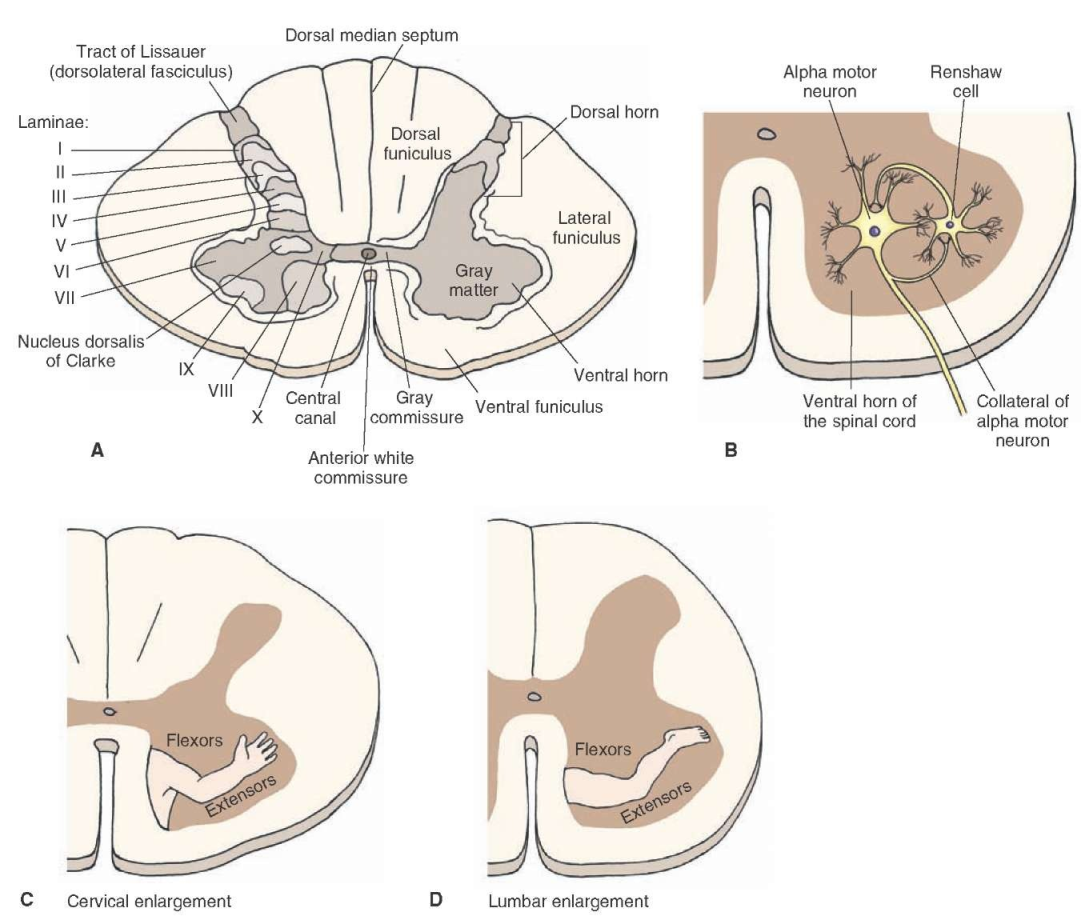Spinal motor function
Nearly all research regarding motor functions of the brain and spinal cord have been completed using animals. In the spinal animal the cord is transected, generally in the neck therefore most of the cord is intact. Subsequent to a few hours or days (i.e., in higher animals) the cord returns to normal function. In the decerebrate animal the brainstem is transected in the middle to lower portion of the mesencephalon. This blocks the common inhibitory drive and permits the spinal cord to have increased reflexes. Though, eliminating the brain inhibitory and excitatory input to the spinal cord provides us only a fractional picture of normal motor control.
It includes sensory component, S.C. component and motor component.
